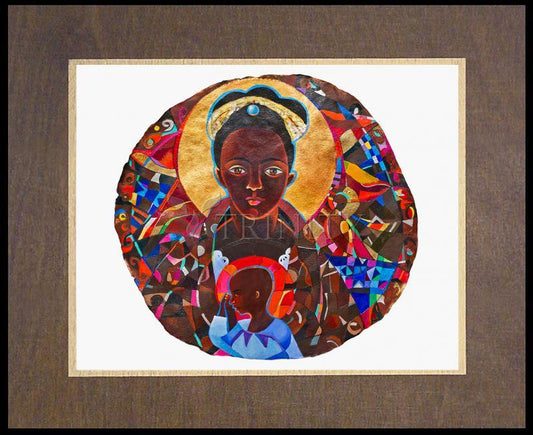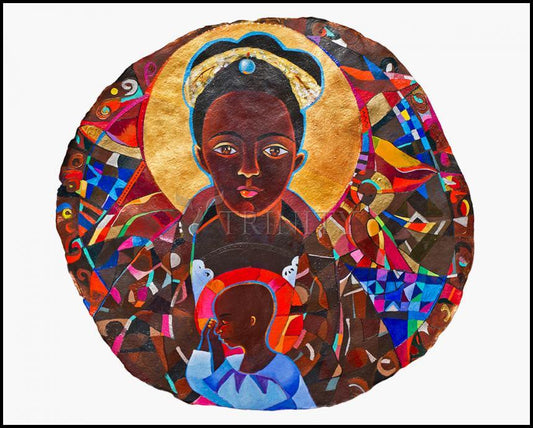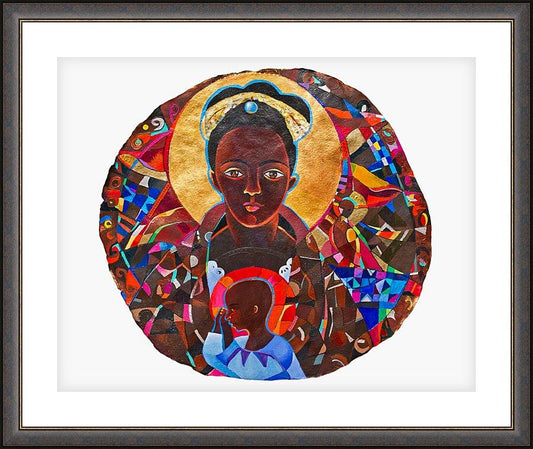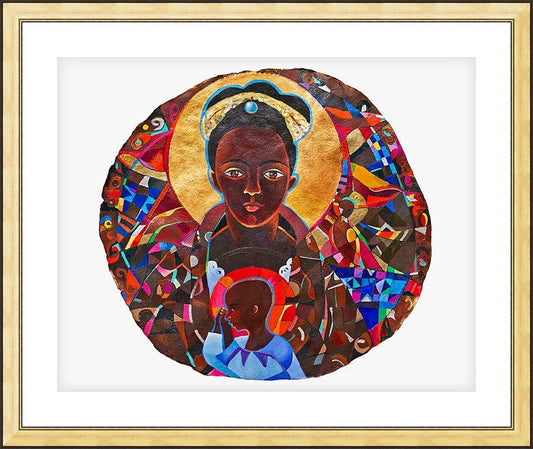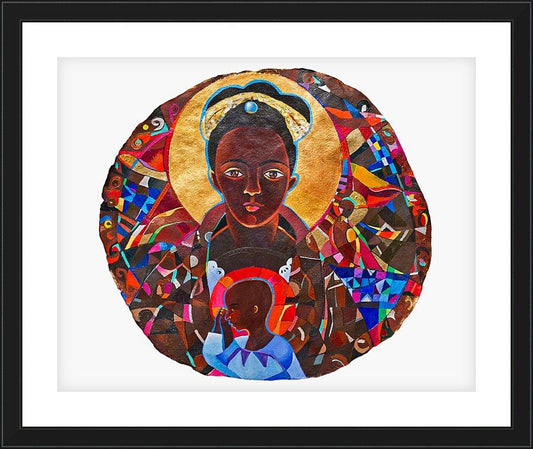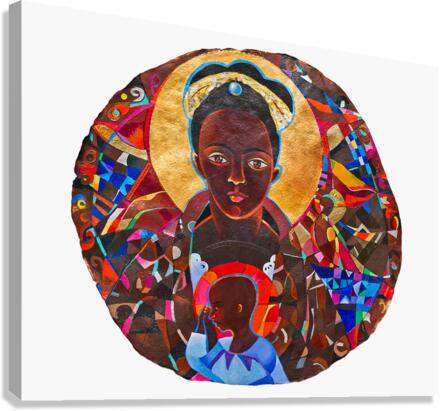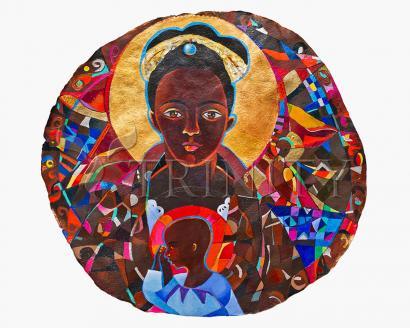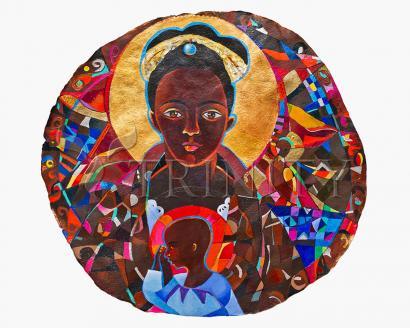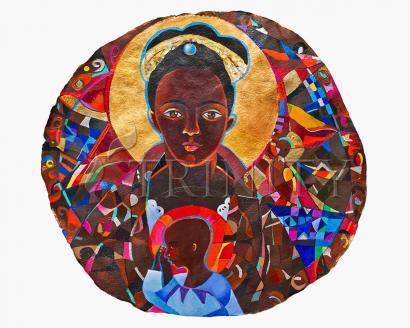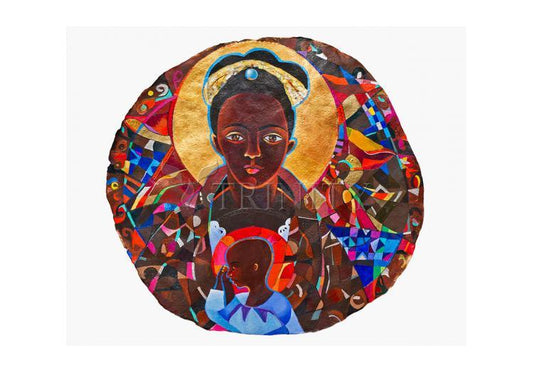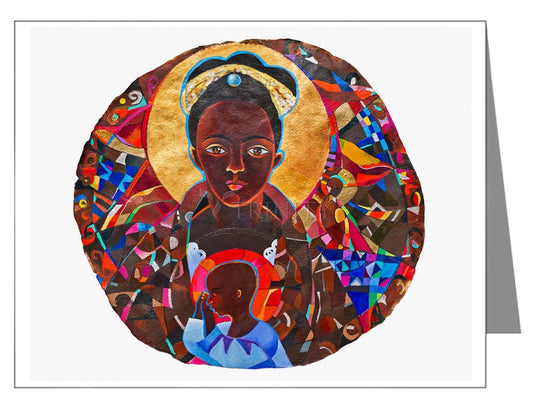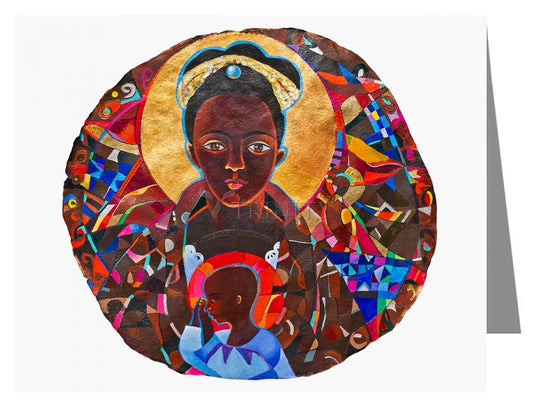The Black Madonna is a painting of the Madonna and Christ Child which legend states was painted by St. Luke the Evangelist. St. Luke is believed to have used a tabletop from a table built by the carpenter Jesus. It was while Luke was painting Mary that she told him about the events in the life of Jesus that he eventually used in his gospel.
This same legend states that that when St. Helen went to Jerusalem to search for the true cross in 326 AD, she happened upon this portrait of Our Lady. She gave it to her son, Constantine, who had a shrine built to house it. In a critical battle with the Saracens, the portrait was displayed from the walls of Constantinople and the Saracens were subsequently routed. The portrait was credited with saving the city. The painting was eventually owned by Charlemagne who subsequently presented the painting to Prince Leo of Ruthenia (northwest Hungary).It remained at the royal palace in Ruthenia until an invasion occurred in the eleventh century. The king prayed to Our Lady to aid his small army and as a result of this prayer a darkness overcame the enemy troops who, in their confusion, began attacking one another. Ruthenia was saved as a result of this intervention by Our Lady. In the fourteenth century, it was transferred to the Mount of Light (Jasna Gora) in Poland in response to a request made in a dream of Prince Ladislaus of Opola.
The legendary history becomes better documented with the painting's ownership by Prince Ladislaus. In 1382 invading Tartars attacked the Prince's fortress at Belz. In this attack one of the Tartar arrows hit the painting and lodged in the throat of the Madonna. The Prince, fearing that he and the famous painting might fall to the Tartars, fled in the night finally stopping in the town of Czestochowa, where the painting was installed in a small church. The Prince subsequently had a Pauline monastery and church built to ensure the painting's safety. In 1430, the Hussites overran the monastery and attempted to take the portrait. One of the looters twice struck the painting with his sword but before he could strike another blow he fell to the floor writhing in agony and died. Both the sword cuts and the arrow wound are still visible in the painting.
Later, in 1655, Poland was almost entirely overrun by the forces of Sweden's King Charles X. Only the area around the monastery remained unconquered. Somehow, the monks of the monastery successfully defended the portrait against a forty day siege and eventually all of Poland was able to drive out the invaders.
After this remarkable turn of events, the Lady of Czestochowa became the symbol of Polish national unity and was crowned Queen of Poland. The King of Poland placed the country under the protection of the Blessed Mother. A more recent legend surrounding the painting involves the Russian invasion of Poland in 1920. Legend holds that the Russian army was massing on the banks of the Vistula river, threatening Warsaw, when an image of the Virgin was seen in the clouds over the city. The troops withdrew on seeing the image.
There have been reports for centuries of miraculous events such as spontaneous healings occurring to those who made a pilgrimage to the portrait. It gets its name "Black Madonna" from the soot residue that discolors the painting. The soot is the result of centuries of votive lights and candles burning in front of the painting. With the fall of communism in Poland, pilgrimages to the Black Madonna have increased dramatically.



